Alabama is home to a variety of historic forts, which have played important roles in the state’s history. From the American Revolution to the Civil War and beyond, these fortifications have been used to protect citizens, store supplies, and wage war.
If you’re interested in learning more about Alabama’s historical forts, then this guide is for you! We’ll provide information about 19 of the state’s historic forts, including their location, date of construction, and historical events that surround the history of the fort.
So read on to learn more about the historic forts in Alabama!
19 Historic Forts in Alabama
You will learn about some of Alabama’s historic forts in the following. Many of these forts are on the National Register of Historic Places and some of them can be visited.
Fort Morgan

Nestled on the shores of Mobile Bay and Mobile Point, Fort Morgan stands as a testament to the courage and fortitude of those who fought in the American Civil War. The fort was initially built in 1834 at the sight of Fort Bowyer to defend against pirate attacks, but it soon became a key strategic point during the Civil War.
The Confederacy used the fort to control access to Mobile Bay, and it was the site of several bloody battles. In 1864, a Union fleet attempted to break through the Confederate defenses but was repelled in a fierce engagement known as the Battle of Mobile Bay.
The Union eventually prevailed, and Fort Morgan was captured in 1865. Fort Morgan was one of the key sites during the Civil War. Today, the fort Morgan Historic Site is open to the public and is a National Historic Landmark, and visitors can explore the battle-scarred ramparts and learn about one of the most significant campaigns of the Civil War.
Information about visiting Fort Morgan
Fort Mims

Fort Mims was a stockade and fort located in Baldwin County, Alabama. It was the site of a bloody massacre during the Creek War. In August of 1813, a large force of Red Sticks, Creek warriors who were opposed to acculturation and assimilation, attacked the fort.
The defenders, made up of settlers and local militia, were taken completely by surprise. The attackers mercilessly killed more than 500 people, including women and children.
The Fort Mims massacre shocked the nation and helped to galvanize support for the war against the Native Americans. Today, the site of the fort is preserved as a state historic park, and it is considered one of the most important historical sites in Alabama. Find out more information by visiting the Alabama Historical Commission website below.
Information about Visiting Fort Mims
Fort Toulouse/ Fort Jackson
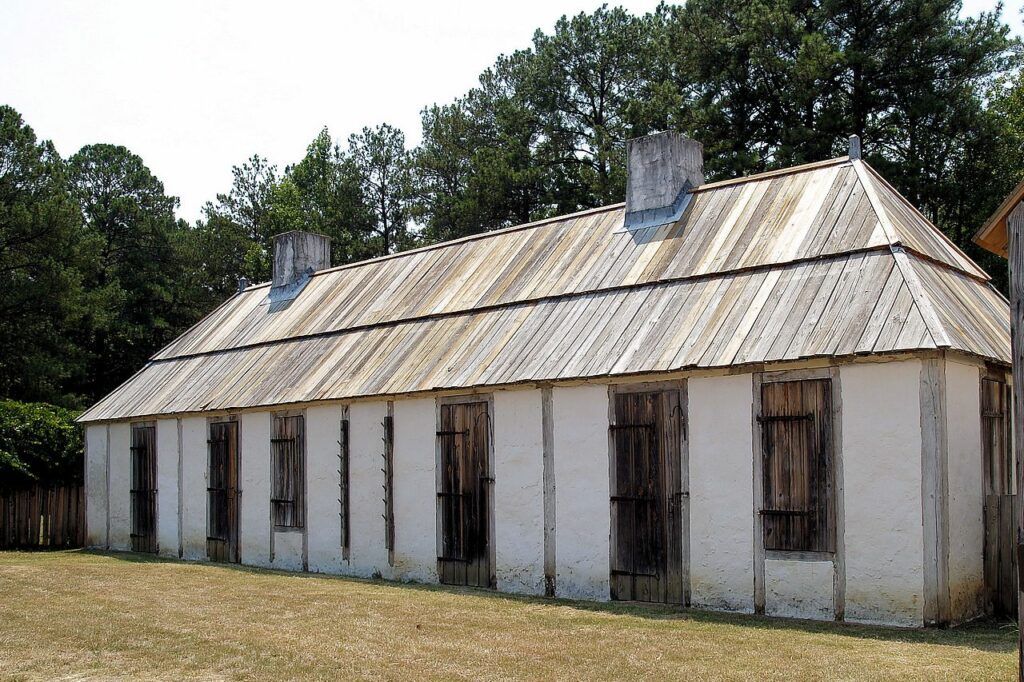
Fort Toulouse/Fort Jackson is a historic site located in present-day Alabama. The fort was originally built by the French in 1717 as a trading post and later expanded by the British during the Seven Years’ War. It eventually became a major frontier outpost during the American Revolutionary War and was used as a base for American troops during the War of 1812.
In 1814, the fort was captured by the British and renamed Fort Jackson. It remained in British hands until 1819 when it was finally returned to the United States. Today, the fort is operated as a state park and is open to the public for tours and events.
Fort Charlotte/ Fort Conde
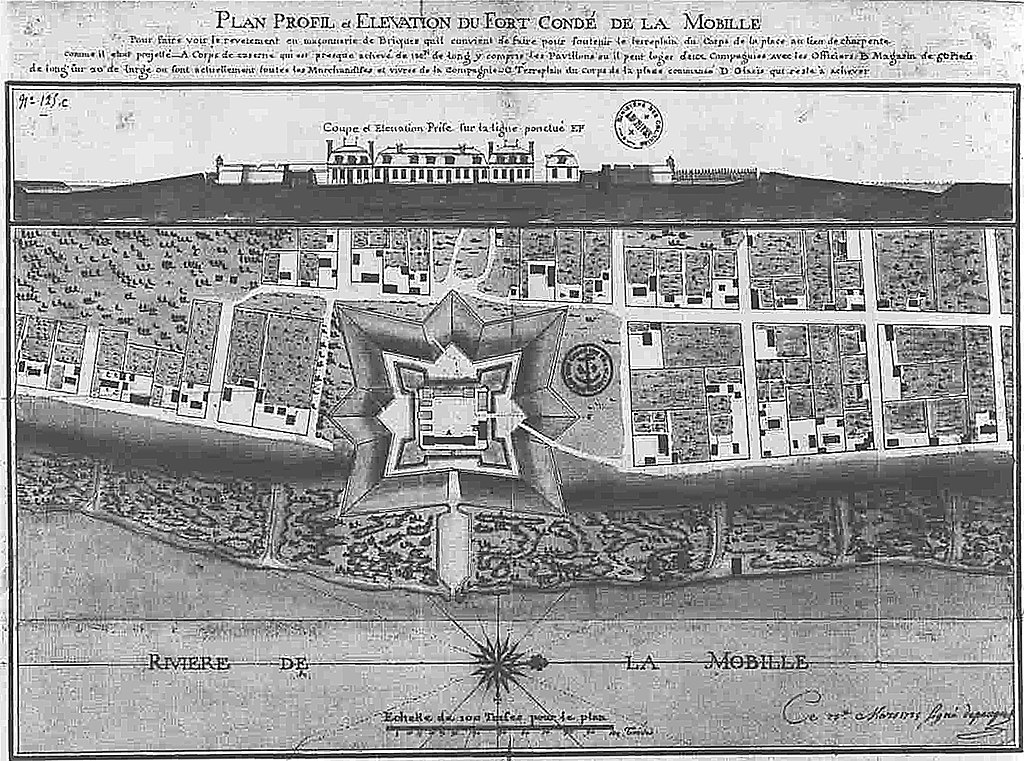
Fort Charlotte was a fort in Mobile, Alabama, built by the British in 1763. The fort was named after Queen Charlotte, wife of King George III.
It was the last fort the British built in the New World. The fort was intended to protect Mobile from French and Spanish attacks during the Spanish-American War.
However, it was never put to use and was abandoned a few years later. In 1780, it became a Spanish Fort when the Spanish captured Mobile and renamed the fort San Carlos de Barrancas.
The fort remained in Spanish hands until 1813, when the United States captured it during the War of 1812. The fort was used as a prison during the American Civil War. Today, the site of the fort is a public park.
Fort Gaines
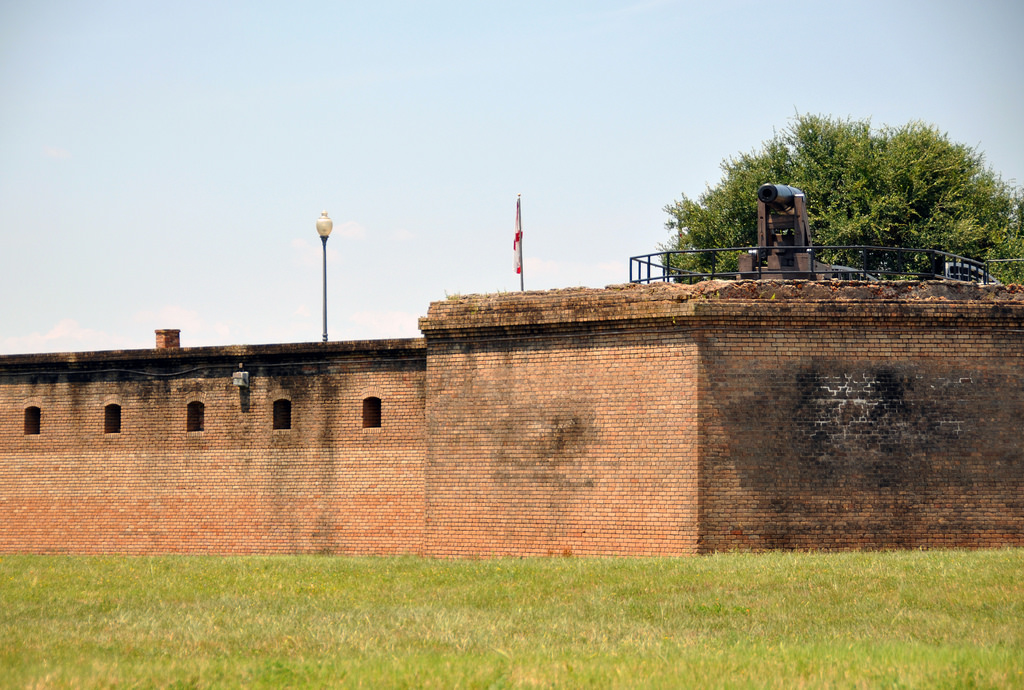
Fort Gaines is a historic fort located on the eastern tip of Dauphin Island, Alabama. The fort was built by the United States in 1821 and was named after Edmund Pendleton Gaines, a hero of the War of 1812.
During the American Civil War, Fort Gaines was captured by Confederate forces in 1861 and served as an important outpost for the Confederacy during the siege of Mobile Bay.
In 1865, Union troops recaptured the fort, which remained in Union hands for the remainder of the war. Fort Gaines was essentially the guardian of Mobile Bay until the end of the Civil War. Today, it is a popular tourist destination.
It is the finest example of military architecture, known for its well-preserved Civil War-era architecture and its role in the famous Battle of Mobile Bay. This is one military installation you should visit because skilled masons constructed it.
Related: 10 Historic Forts in Texas
Fort Harker
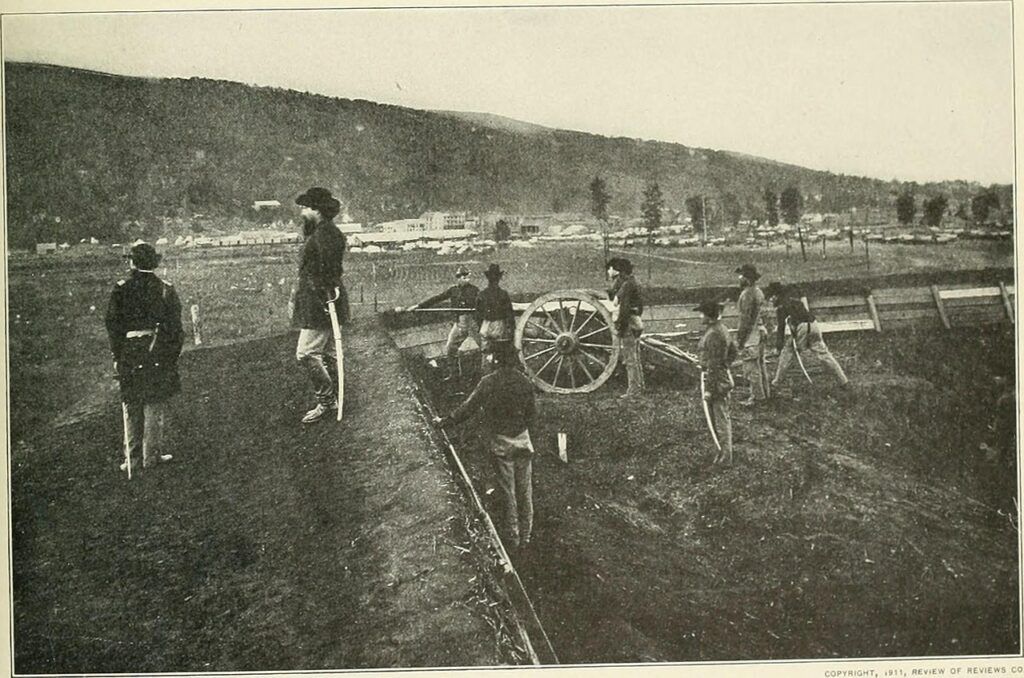
Fort Harker was a United States Army fort located in Alabama. The fort was named after Major General John Milton Harker, who served in the Union Army during the American Civil War. Construction of the fort began in 1866 and was completed in 1867.
The fort was intended to protect the newly constructed Union Pacific Railroad from Confederate attack. During its brief history, Fort Harker saw no combat action. However, it did serve as an important supply base for U.S. troops during the Indian Wars of the 1870s and 1880s.
In 1887, the fort was abandoned, and all its buildings were sold at auction. Today, little remains of the fort except for a few foundations and ruins. The site of Fort Harker is now a city park in Stevenson, Alabama.
Abner Turner Fort
Abner Turner Fort was built in the early 1800s as a defensive structure during the Creek War.
The fort was named after its builder, Abner Turner, a colonel in the Alabama militia. It was located in what is now Etowah County, near Gadsden.
During the war, the Creek Indians used the fort as a base of operations against American settlers in the area.
1814 American soldiers under General Andrew Jackson besieged and captured the fort. The captured Creek warriors were marched to a detention camp in Louisiana, where they were eventually released.
The fort remained in use by the American military until 1819, when it was abandoned. Today, the remains of the fort are preserved as a historical site.
Fort Armstrong
Fort Armstrong, a pivotal military structure, was built during the height of the Creek War, which spanned from 1813 to 1814.
This war was a segment of the larger War of 1812. The construction of Fort Armstrong occurred in the critical year of 1813 in what is now Alabama, a state that was then the frontier of American expansion.
The fort was strategically located to combat the Red Sticks, a faction within the Creek Nation that opposed American expansion and allied with British forces.
The choice of location for Fort Armstrong was deliberate, intended to control key travel routes and serve as a bulwark against potential attacks.
Key military figures involved in the operations around Fort Armstrong included General Andrew Jackson, who led the American forces against the Red Sticks. The fort played a central role in his campaigns during the Creek War.
Major Engagements and Military Role
Fort Armstrong was a staging area for several significant military campaigns. One of the major events associated with the fort was the Battle of Horseshoe Bend, which occurred on March 27, 1814.
This battle was a decisive moment in the war, leading to a substantial defeat of the Red Sticks and effectively marking the end of major hostilities in the region.
Fort Armstrong’s design was typical of military forts of that era. It likely featured a wooden palisade, barracks, armaments storage, and provision storage.
These features were essential for supporting the troops stationed there and for defending the fort against possible attacks.
After the Creek War, the importance of Fort Armstrong, like many frontier forts, declined rapidly.
With the defeat of the Red Sticks and the signing of the Treaty of Fort Jackson in August 1814, the immediate need for such a military post diminished. The fort likely fell into disuse and was eventually abandoned.
Fort Bib
Fort Bib was a fort located in Alabama. The Union Army used it during the American Civil War. The fort was built in 1862 and was named after General Francis S. Bibb.
It was located on the Mobile and Ohio Railroad. The fort was captured by Confederate troops in 1865.
Fort Lavier
Fort Lavier was a military fort in Alabama. The Confederate Army used it during the American Civil War. It was named after General Pierre Beauregard, who commanded the Confederate forces during the war.
The fort was located on a hill near the city of Mobile. It was one of the largest forts in the area and had a large garrison. Union forces captured the fort in 1865 and abandoned it soon afterward.
Today, the site of the fort is a popular tourist attraction. Visitors can explore the fort’s remains, including the foundations of the buildings and the walls. There are also several cannons on display.
Fort Easley
Fort Easley was a small fortress in what is now Baldwin County, Alabama. The British built it in 1763 during the French and Indian War as part of their system of fortifications along the Gulf Coast.
The fort was named after Sir Charles Easley, a British general who had served with distinction in the Seven Years’ War.
During the American Revolution, Fort Easley was captured by Spanish forces loyal to the American cause.
In 1813, British troops recaptured it during the War of 1812, and it remained in British hands until the end of the war. The fort was abandoned after the war and quickly fell into ruin. Today, only a few foundation stones remain to mark its location.
Landrum’s Fort/ Mott’s Fort
Landrum’s Fort, also known as Mott’s Fort, was in present-day Dale County, Alabama. It was built by John Landrum in 1813 and named after him.
The fort was a refuge for settlers during the Creek War of 1813-1814.
After the war, the fort was abandoned and fell into ruin. In the early 21st century, the site of the fort was marked by a plaque and listed on the National Register of Historic Places.
Fort Montgomery
Fort Montgomery was a United States Army installation in Alabama. It was built in 1813 and named after General Richard Montgomery, who had died during the Revolutionary War.
The fort was designed to protect the new American settlement of Mobile from British attack.
During the War of 1812, the fort saw its first action when it successfully repelled a British assault. In the years that followed, the fort continued to play an important role in the defense of Mobile.
However, the Army eventually abandoned it, and it fell into ruins. In recent years, efforts have been made to restore the fort to its former glory. Today, it is a reminder of American history’s early days.
Fort Sinquefield
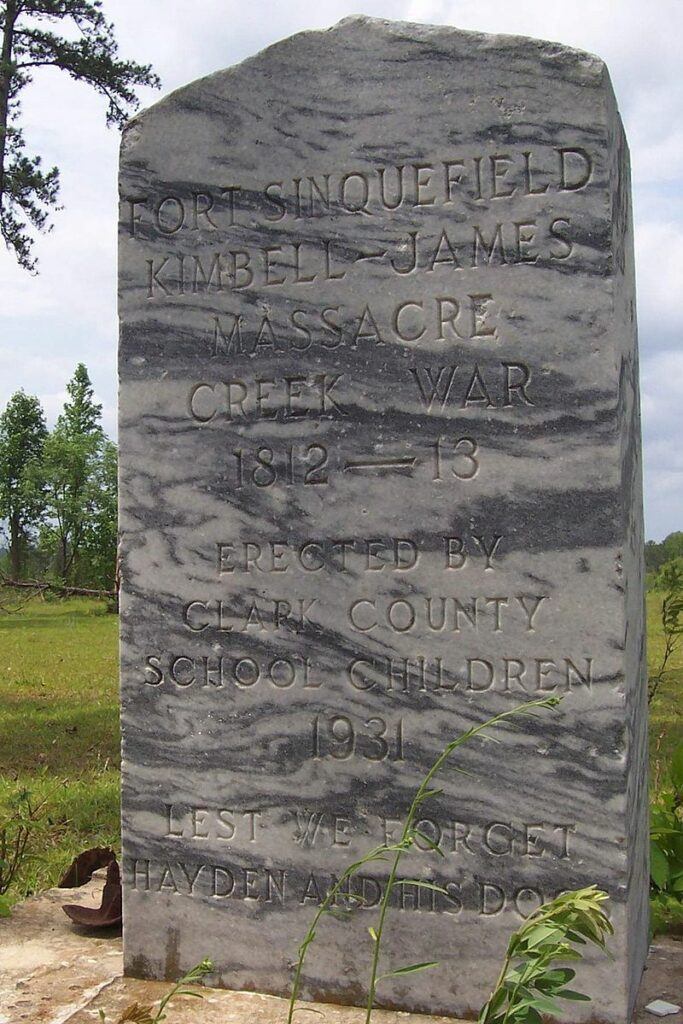
Fort Sinquefield was a military fort located in present-day Alabama. The fort was built in 1813 by General Andrew Jackson and named for Colonel John Sinquefield, who had served under Jackson during the Creek War.
Sinquefield was one of a series of forts built by the United States during the Creek War to protect American settlers from Creek attacks.
The fort saw little action during the war, but it did play a role in the First Seminole War when it served as a base for American troops. The fort was abandoned in 1817, and nothing remains of it today.
Fort Strother
Fort Strother was a key fortification in the Creek War. Built by American settlers in 1813 to help protect their homes from attacks by the Creek Indians, it was located in present-day Alabama on the banks of the Coosa River.
It served as a base of operations for American troops during the war and was also used as a hospital and supply depot. After the war, the fort was abandoned and fell into ruin.
Today, it is a popular spot for history buffs and nature lovers. The fort remains are still visible, and the surrounding area is full of hiking trails and beautiful scenery.
Turner’s Fort
In the early 1800s, the area now known as Alabama was a largely unsettled frontier. In 1813, a man named John Turner built a fort near the present-day city of Florence.
The fort became known as Turner’s Fort and served as a haven for settlers seeking a new life in the wilderness.
The fort was also an important stop on the trail from Tennessee to Mississippi. Over time, the fort became a thriving community, with businesses and homes surrounding it.
Today, Turner’s Fort is no longer standing, but its legacy lives on in Florence.
Fort Warren
Fort Warren, also known as Fort Burnt Corn, is a historic fort in Mobile, Alabama. The fort was built in 1816 by Colonel Richard Warren, who built it near Burnt Corn Creek.
The fort protected early settlers from the many Indian attacks in the area. It is speculated that the site of Fort Warren is about half a mile south of the junction of Monroe County roads 5 and 42.
Fort Stoddert
Fort Stoddert was built in 1864 as a Union outpost in the American Civil War. Located in Mobile Bay, Alabama, the fort was designed to protect the city of Mobile and the mouth of Mobile Bay from Confederate attacks.
It’s located near Mount Vernon. Although it saw little action during the war, the fort played an important role in the Union’s blockade of the Gulf Coast.
In 1865, the Union Army abandoned the fort and later used it as a prison for Confederate soldiers.
Fort Leslie
Fort Leslie is a small fort located in Daphne, Alabama. The Confederate Army built it in 1864 during the American Civil War. It was named after General Leslie, who commanded the Confederate troops in the area.
The fort protected the town from Union troops and was successfully defended against several attacks.
Conclusion – Historic Forts in Alabama
Well there you have 19 historic forts that were built in Alabama. Alabama is a fascinating state when it comes to history. I hope you get a chance to visit some of these forts in Alabama. If you have any questions or comments please leave them below. We love to hear from our readers!

Cory is a website owner and content creator who enjoys fishing, history, coin collecting, and sports, among other hobbies. He is a husband and father of four.
Romans 15:4 For whatever was written in former days was written for our instruction, that through endurance and through the encouragement of the Scriptures we might have hope.

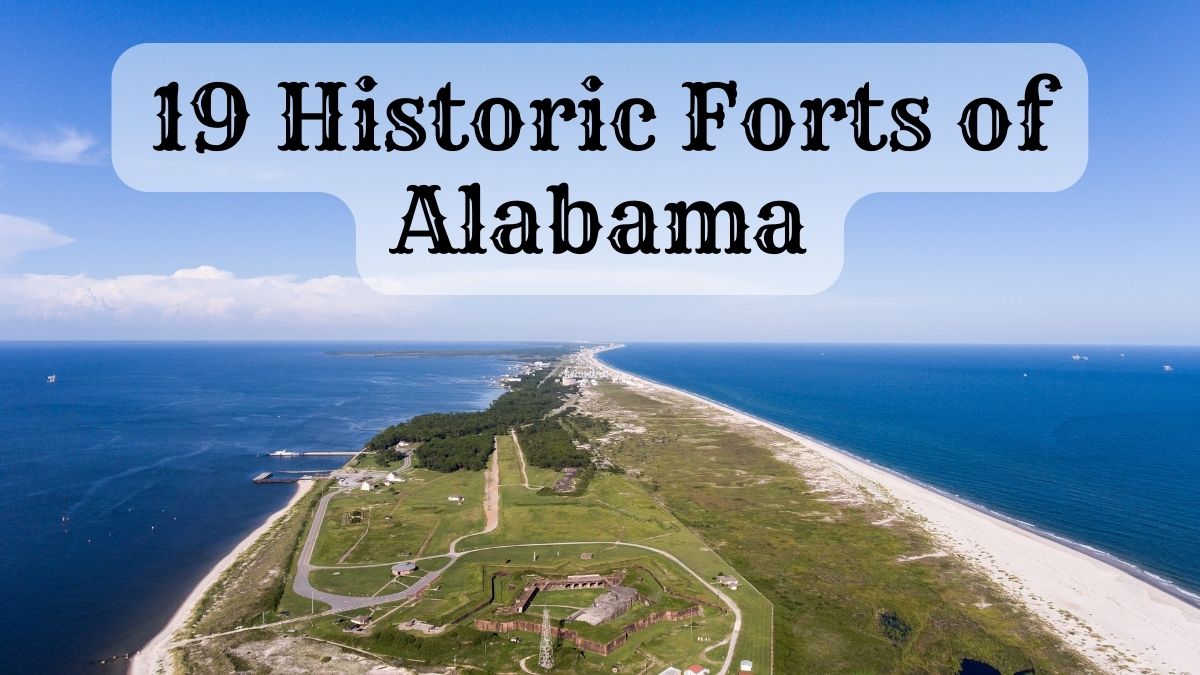
My name is Jim Lewis, Cherokee Co., Alabama historian I know there were several Fort Armstrong’s, I have never heard of the Fort Armstrong you mention as having a role in the War of 1812. In the Creek War of 1813, a part of the War of 1812, General White, Army of East Tennessee built Fort Armstrong on the Coosa River near Cedar Bluff, Cherokee County, Al. I talked Alabama Power into funding the archaeology for Fort Armstrong. Matt Gage Director of Archaeology, Moundville, was the archaeologist in charge. The fort was located in May 2017.